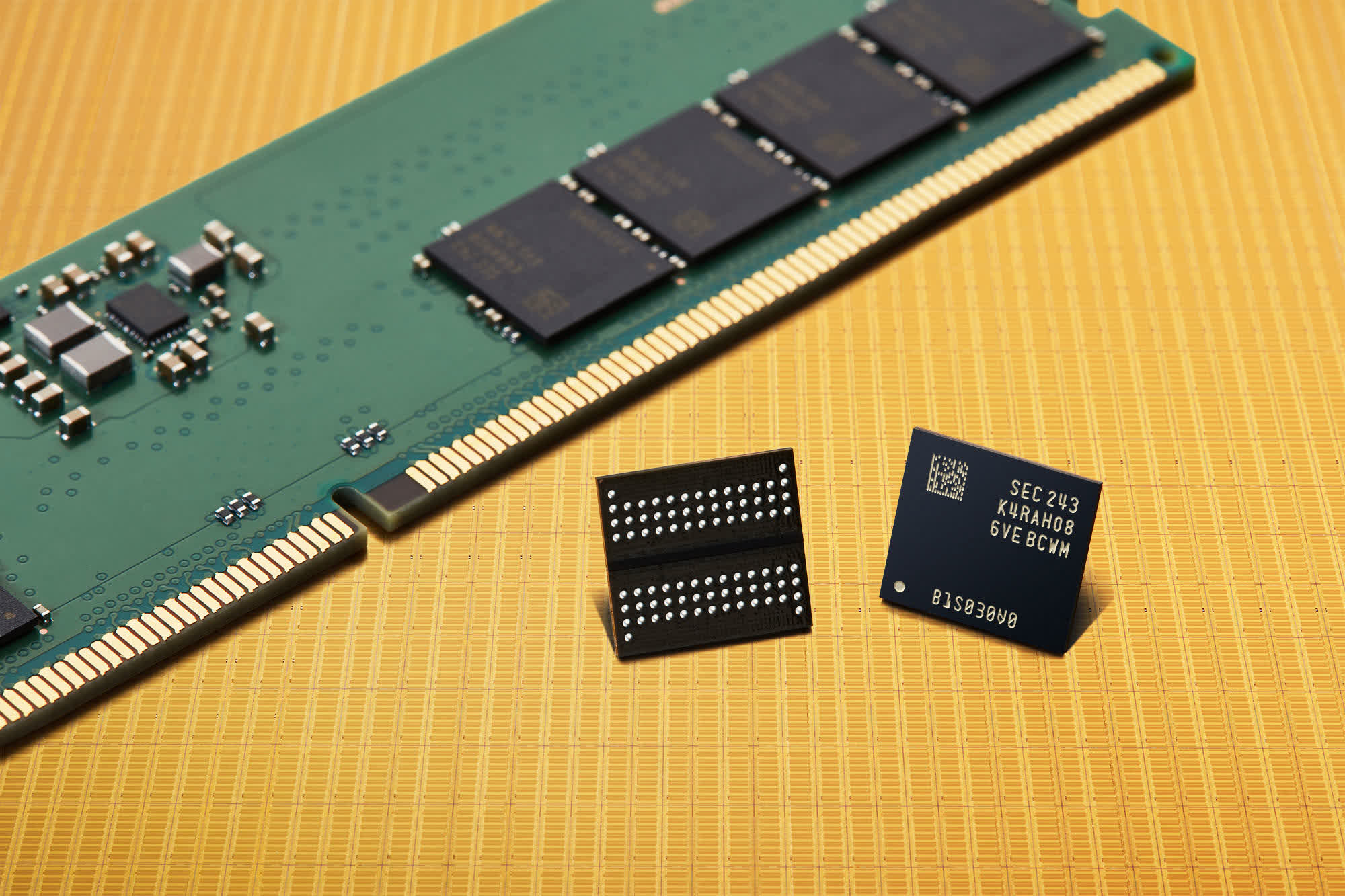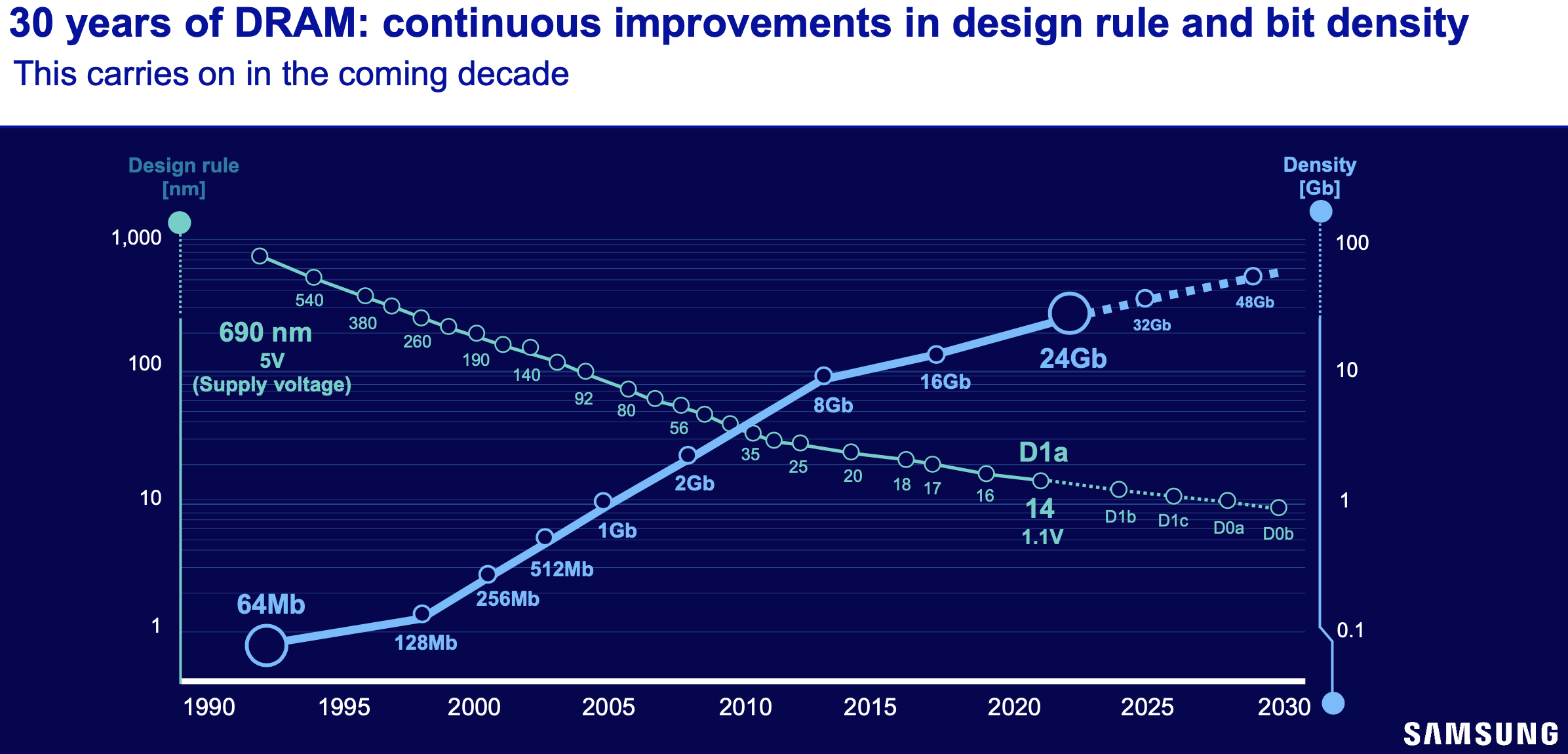In brief: As we move closer to 10nm for DRAM tech, manufacturers like Samsung are having a more difficult time coming up with ways to scale down the transistors and capacitors used in building memory cells. That said, Samsung says it has successfully ramped up the production of 12nm DDR5 chips, with further refinements on the way thanks to recent advancements in materials science.
Today, Samsung revealed it has started mass-producing 16Gb DDR5 chips using the most advanced 12nm-class process technology. The company marks this as its greatest achievement in DRAM since the introduction of 64Mb DRAM chips back in 1992 and says it remains as committed as ever to innovate in this space.
The Korean tech giant explains this generation of DDR5 chips isn't designed for increased bit density or higher speeds. Instead, the focus has been on reducing power consumption by up to 23 percent when compared to the previous generation. That means these chips are still rated for a maximum pin speed of 7.2Gbps, which is comparable to transferring two 30GB 4K movies in around one second.
Samsung says the transition from a 14nm-class process node to the new one was possible thanks in no small part to a new high-K material for transistor gates. This allowed the company to increase cell capacitance and improve signal integrity, which translates into more stable and efficient memory operation since the cells won't have to be refreshed as often.
Furthermore, improvements in EUV patterning accuracy allowed Samsung to increase wafer productivity by up to 20 percent. That said, the company believes there's still plenty of room left for pushing the limits of cell size by using even lower resistance metals. In theory, these new materials should allow the company to improve word- and bit-line resistance by a further 40 and 25 percent, respectively. Additional refinements to FinFET tech could improve speeds by a further 30 percent and reduce power usage by as much as 20 percent.
Also read: Should You Buy DDR5 for Your Next Budget PC Build?
The new 12nm DDR5 memory tech will first hit the data center and workstation markets later this year, but it won't be long before it will make its way into consumer-grade products. It's worth noting that AMD has been working closely with Samsung on 16Gb DDR5 DRAM that's optimized for Ryzen systems, with mass production for that variant planned to start sometime in the second half of this year.
In the meantime, Samsung's memory business is one of many in the chip industry that's been affected by what analysts describe as the "sharpest slowdown" in more than a decade. The Korean company has seen its profits evaporate in recent months but remains optimistic about a market recovery toward the end of the year.
One effect of the downturn is that DRAM prices will continue to drop for a few more months, mostly due to excess OEM inventory. That's great news for consumers, but manufacturers like Samsung, SK Hynix, and Micron are understandably interested in stopping that trend as soon as possible. For Samsung in particular, this means making fewer low-margin DDR4 products to nudge its customers toward adopting newer DRAM tech.

